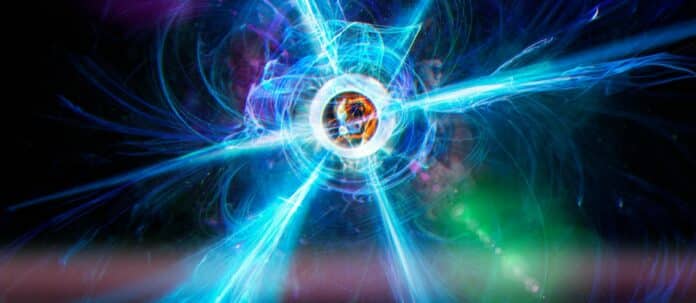The Alice string is unusual among topological defects, appearing in specific grand unified theories as an element that converts a monopole into an antimonopole as it travels around the string. This fascinating “looking-glass” property, which gives the excitation its name, has a direct counterpart in condensed matter systems, where Alice strings have been identified with half-quantum vortices in superfluids.
However, observing such Alice rings has remained a significant challenge due to the scarcity of experimentally accessible monopoles in continuous fields. A new study by collaborative careers of Aalto University Professor Mikko Möttönen and Amherst College Professor David Hall reported experimental evidence of an Alice ring.
This was the first time the collaboration could create Alice rings in nature, which was a monumental achievement.
Hall said, “This fundamental research opens new doors into understanding how these structures and their analogs in particle physics function in the universe.”
In quantum physics, monopoles, the solitary counterpart of dipoles, which have positive and negative charges at opposite poles, continue to be perplexing concepts. A monopole, on the other hand, only carries positive or negative charges.
Although the idea seems simple, creating a true monopole has proven to be a feat that defines careers. The Monopole Collaboration achieved this by controlling a gas of rubidium atoms created in a nonmagnetic state at a temperature close to zero. They subsequently managed to produce a monopole by directing the zero point of a three-dimensional magnetic field into the quantum gas under these severe circumstances.
The quantum monopoles are ephemeral- they decay a few milliseconds after their creation. The Alice ring takes shape amid this instability.
Because of the ephemeral nature of monopoles, scientists simulated stable Alice rings that lasted for as long as 84 milliseconds. This was over 20 times longer than the monopole lifespan.
Scientists hope future experiments will reveal even more peculiar properties of Alice rings.
Hall said, “From a distance, the Alice ring just looks like a monopole, but the world takes a different shape when peering through the center of the ring.”
Möttönen said, “From this perspective, everything seems to be mirrored as if the ring were a gateway into a world of antimatter instead of matter.”
A monopole traveling through an Alice ring’s center should, in theory, change into an antimonopole with the opposing charge. The charge of the Alice ring would adjust accordingly. Although this behavior has not yet been scientifically verified, Möttönen claimed that the topological structure of Alice requires this behavior rings.
Blinova said, “It is simply amazing to have such a major discovery as the finale of my PhD work.”
Journal Reference:
- Blinova, A., Zamora-Zamora, R., Ollikainen, T. et al. Observation of an Alice ring in a Bose–Einstein condensate. Nat Commun 14, 5100 (2023). DOI: 10.1038/s41467-023-40710-2
